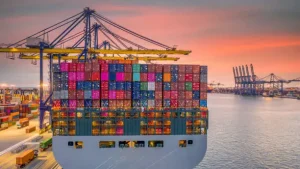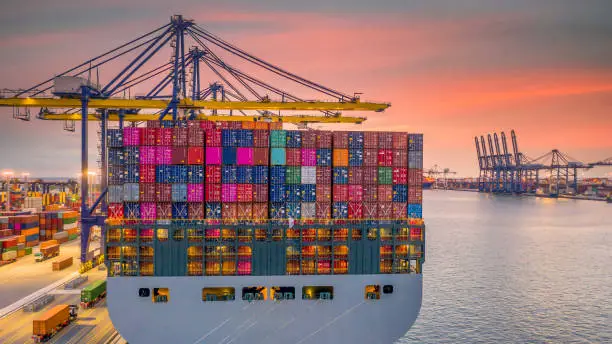China Dominates Container Ship Orders Amid Global Shipping Boom
In recent months, the global shipbuilding industry has witnessed an unexpected surge in demand, especially for container ships. Leading the wave is China, which has rapidly secured its dominance in new vessel orders, reflecting not only its industrial strength but also a shift in the global maritime balance.

Global Demand for Container Ships on the Rise
As global trade rebounds and supply chains stabilize, shipping companies are placing massive orders for new container vessels. The rise is fueled by several factors:
-
Increased e-commerce and manufacturing recovery post-pandemic
-
Geopolitical shifts prompting diversified supply routes
-
The need to replace older, less eco-efficient ships with greener alternatives
This boom is reminiscent of the period before 2008, though this time, the focus is on environmental compliance and digitalized ship designs rather than sheer volume.
China Emerges as a Global Shipbuilding Powerhouse
In this landscape, Chinese shipbuilders have emerged as the frontrunners, capturing the majority share of global container ship contracts. Chinese yards have built a reputation for fast delivery timelines, competitive pricing, and improving quality — making them a preferred partner for global shipping giants.
Some notable trends:
-
China accounts for a significant percentage of all global container ship orders in the last year.
-
Shipowners are turning to China not only for traditional vessels but also for dual-fuel and LNG-powered ships to comply with tightening global emission regulations.
-
Chinese yards are increasingly offering customized solutions tailored for Europe-Asia trade and trans-Pacific routes.
Europe and Korea: Still Key Players, but Losing Ground
While South Korea and Europe (especially Germany and Italy) continue to maintain a foothold in high-tech ship segments like LNG carriers and cruise ships, they are facing intense competition in the container segment.
Korean yards, historically dominant, are now shifting focus toward higher-value, technologically advanced vessels, which takes more time and investment. Meanwhile, European yards struggle with labor costs and production capacity, making it difficult to match China’s speed and price advantage.
Environmental Regulations Driving Demand
A major driver behind the shipbuilding surge is the IMO’s 2023 and 2030 carbon emission goals. Shipowners worldwide are being pushed to modernize their fleets to meet Energy Efficiency Existing Ship Index (EEXI) and Carbon Intensity Indicator (CII) requirements.
As a result, most new orders are for:
-
Dual-fuel ships (LNG, methanol, or ammonia)
-
Battery-assisted vessels
-
Digitally monitored engines for real-time efficiency tracking
Chinese builders have quickly adapted by upgrading their shipyards to handle these modern designs, attracting even more clients.
Opportunities and Risks for Vietnam
For Vietnam, a country with growing ambitions in logistics and maritime infrastructure, the current trend presents both a challenge and an opportunity. While Vietnamese shipbuilding still lags behind in scale and technology, the increasing demand for feeder ships and regional cargo carriers opens a niche for Vietnam-based yards to serve short-sea shipping routes, especially within Southeast Asia.
Furthermore, Vietnamese exporters and logistics companies need to pay attention to this evolving shipbuilding landscape, as it affects freight capacity, shipping costs, and vessel availability — all critical factors in maintaining export competitiveness.
Looking Ahead: What It Means for Global Trade
The surge in container ship orders signals a long-term optimism in global trade, even amid short-term disruptions like the Red Sea crisis or Panama Canal bottlenecks. With newer, more efficient vessels entering the market, we can expect:
-
Lower operating costs for carriers
-
Greater sustainability across supply chains
-
Enhanced capacity on high-volume routes, including Asia–US and Asia–EU lanes
However, industry stakeholders also caution that oversupply risks may arise if economic recovery slows or if consumer demand weakens in key markets like the US or Europe.
Conclusion
The global container shipping sector is undergoing a major transformation, with China rapidly asserting its dominance in shipbuilding. This trend is reshaping the future of global logistics and supply chain strategies. For logistics professionals, exporters, and maritime service providers, understanding this shift is crucial for planning investments and maintaining competitive edges in international trade.
Read more:
Dịch Vụ Vận Chuyển Cà Phê Nhân Xanh Bằng Đường Biển Đi Mỹ
Chuyển phát nhanh đi Mỹ bằng dịch vụ UPS

